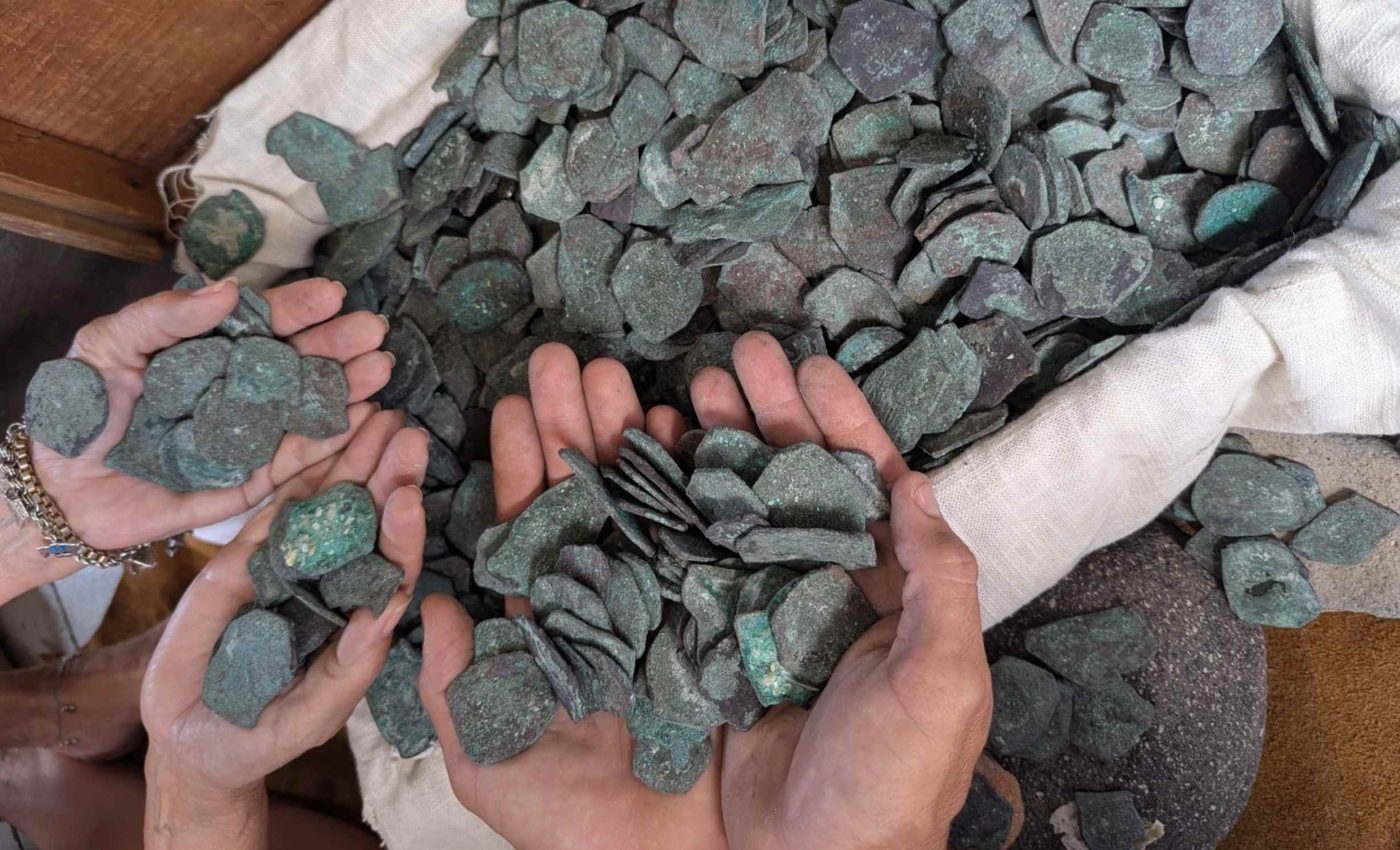
Divers discover $1 million in gold coins from a Spanish shipwreck
More than 1,000 silver and gold coins worth over $1 million were recovered this summer along Florida’s Treasure Coast. The cache includes silver pieces minted in colonial Mexico, Peru, and Bolivia, plus several gold coins and rare artifacts found by professional salvors working the 1715 Fleet of Spanish shipwrecks.
“This discovery is not only about the treasure itself, but the stories it tells. Finding 1,000 of them in a single recovery is both rare and extraordinary.” said Sal Guttuso, director of operations for the salvage company.
Why this discovery matters
This find opens a window on the economy of the Spanish Empire and the people who moved precious metals across the Atlantic.
Each coin carries data in its date, weight, and mint mark (a small symbol or letter stamped on a coin showing where it was made), which lets historians track how wealth flowed through colonial ports and into European markets.
The work also intersects with decades of research led by Dr. Roger C. Smith, a state archaeologist at Florida’s Department of State, Division of Historical Resources.
His field has shown how careful documentation turns a newsworthy splash into lasting evidence that can be studied, taught, and exhibited.
How the 1715 Fleet sank
The 1715 Fleet was a convoy homebound to Spain when a powerful hurricane drove ships onto Florida’s reefs in 1715, scattering cargo along 50 miles of coastline, a disaster detailed in a National Park Service report.
Spanish crews salvaged part of the treasure in the months that followed, yet much remained lost under shifting sand.
Centuries of storms and currents buried and exposed fragments of hulls and cargo again and again.
Modern searches rely on tight grids, controlled hand fanning, and metal detection to map anomalies before any artifact leaves the seabed.
What the coins can reveal
Silver reales (Spanish silver coins used in the 16th-19th centuries) served as an international currency for centuries, with the famous 8 reales coin known as the Spanish dollar or “piece of eight.”
Gold escudos – Spanish gold coins used during the colonial era – circulated at higher values, and both denominations help researchers date wreck layers and link artifacts to specific mints.
Legible dates and marks on these coins allow analysts to test questions about production spikes, royal reforms, and mint quality control.
When combined with sediment data and find spots, they also help reconstruct how a wooden hull broke apart in the storm.
Who owns a find like this
Florida law sets a clear baseline, declaring that treasure trove and artifacts abandoned on state lands or in state waters belong to the public through the Division of Historical Resources, as spelled out in the Florida statute.
Qualified teams can get permits to conduct exploration and recovery under state oversight.
Distribution follows administrative rules that aim to protect research access and public display.
The Division typically retains about 20 percent of recovered materials, with roughly 80 percent transferred to the permitted team, according to Florida Administrative Code rule.
How science treats shipwrecks
Florida’s Underwater Archaeological Preserves program grew from efforts to balance access with protection.
The preserves use public education, marked mooring buoys, and site guides to reduce anchor damage and looting while encouraging responsible visits.
The Urca de Lima, part of the 1715 disaster near Fort Pierce, became the state’s first preserve in 1987 and remains a case study in how interpretation can safeguard a fragile site.
The approach shifts the focus from private collecting to shared stewardship led by trained professionals.
Why this matters beyond the money
Coins like these help test narratives about empire, labor, and trade. They point to mines in the Andes and Mexico, to enslaved and free workers, to shipwrights and sailors, and to a global market that knit together distant ports.
Each artifact that reaches a lab adds a verified data point. Over time, those points support new maps of shipping routes, better chronologies for mint output, and clearer pictures of Florida’s maritime archaeology.
Next steps with the 1715 Fleet
Conservators will stabilize the metal by removing salts and oxides, then document inscriptions, weights, and any edge markings.
Catalog entries will note the find locations and conditions so that future scholars can revisit not just the coin, but its context.
Pieces selected by the state will join public collections for research and exhibition.
Others will remain with the permitted company and subcontractors, but the documentation that accompanies them will still feed the historical record.
How to value the 1715 Fleet
Market headlines focus on dollars. Researchers look for legible dates, die varieties (small differences in coin designs caused by variations in the metal stamps used to strike them), mint anomalies, and clusters that suggest an original chest or bag.
This recovery will matter most if it sharpens the timeline of the final voyage and clarifies which mints and years dominated the cargo. That is how a headline turns into history that students can learn from and museums can teach.
Florida’s coastal museums already display state-selected coins and artifacts from these wrecks, making the story accessible to anyone who wants to learn.
That access depends on simple choices, like using mooring buoys, respecting marked preserves, and reporting unauthorized digging.
Responsible curiosity helps keep sites intact for the next visitor and the next generation of students. Public trust, not secrecy, is what keeps these stories alive.
—–
Like what you read? Subscribe to our newsletter for engaging articles, exclusive content, and the latest updates.
Check us out on EarthSnap, a free app brought to you by Eric Ralls and Earth.com.
—–













